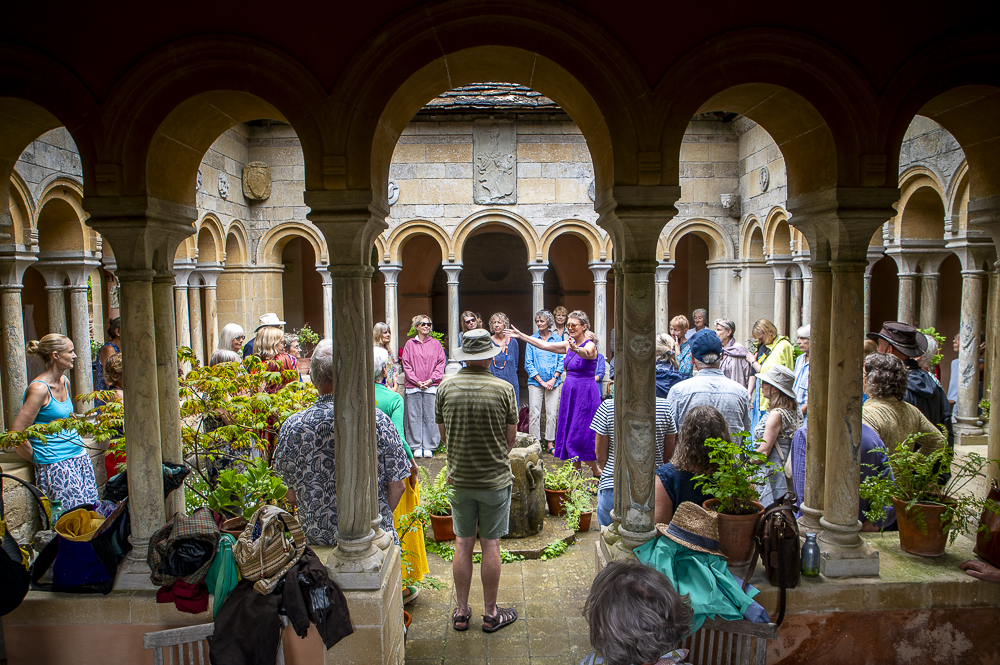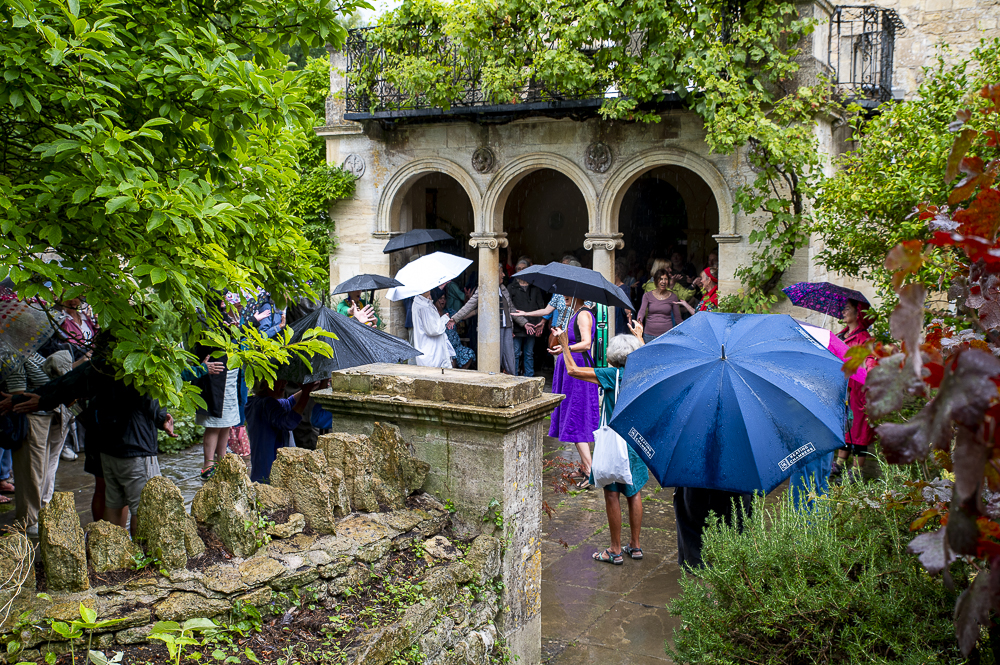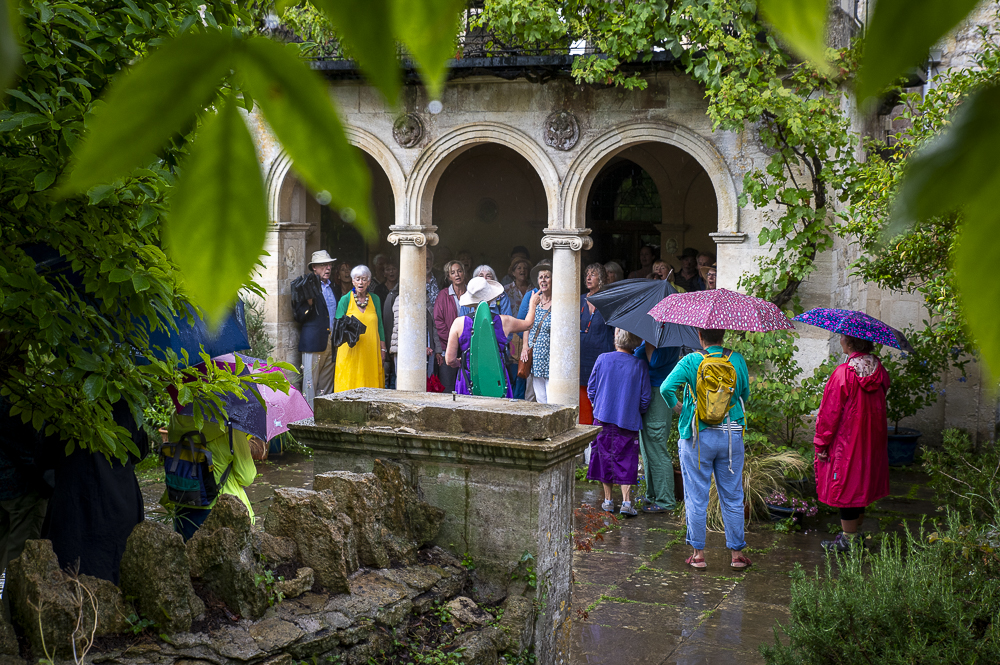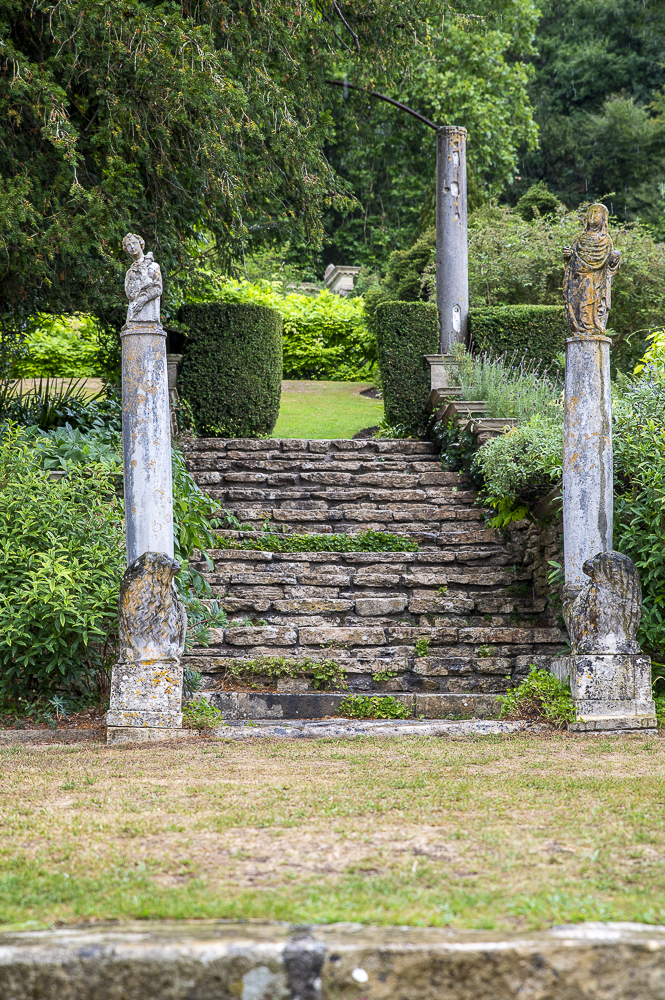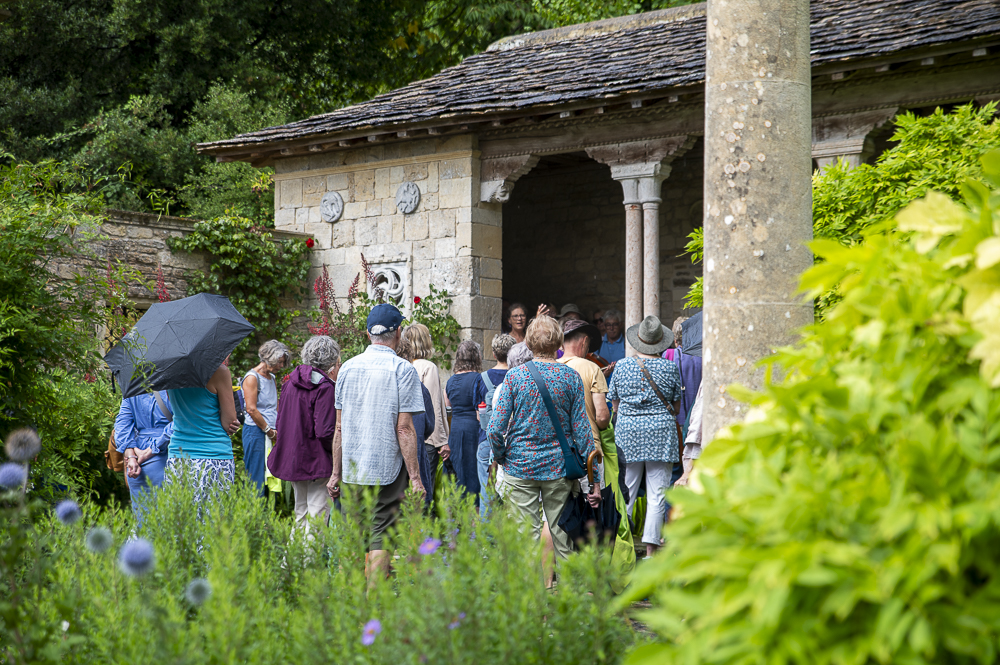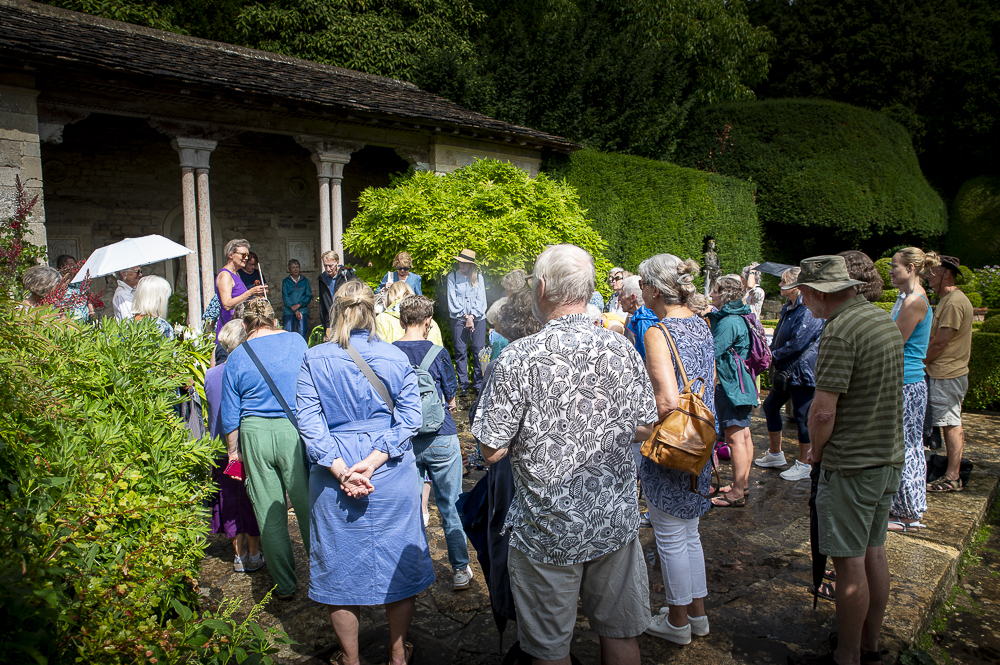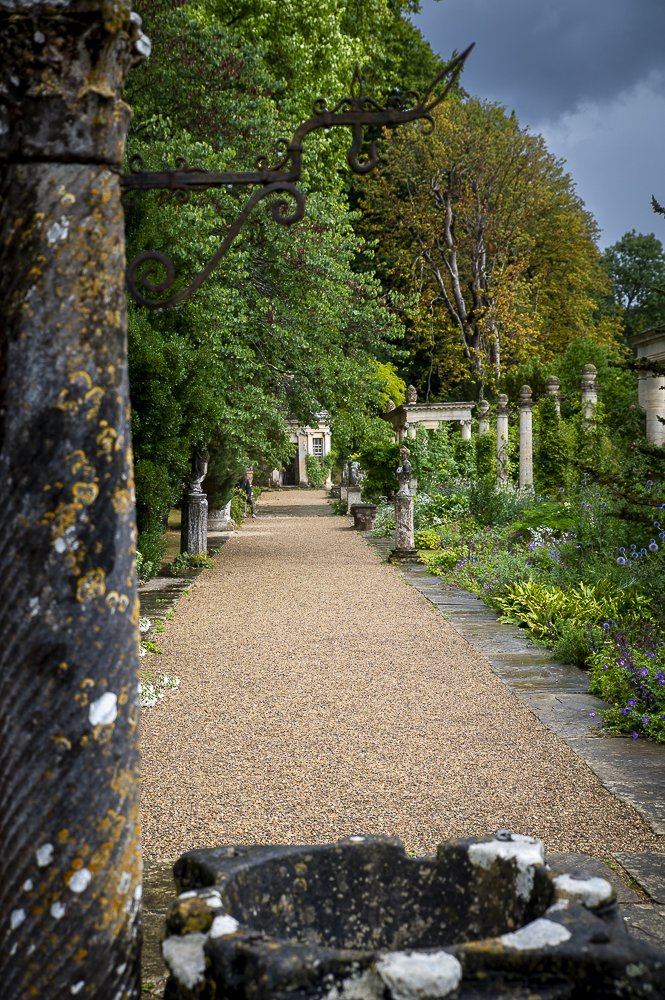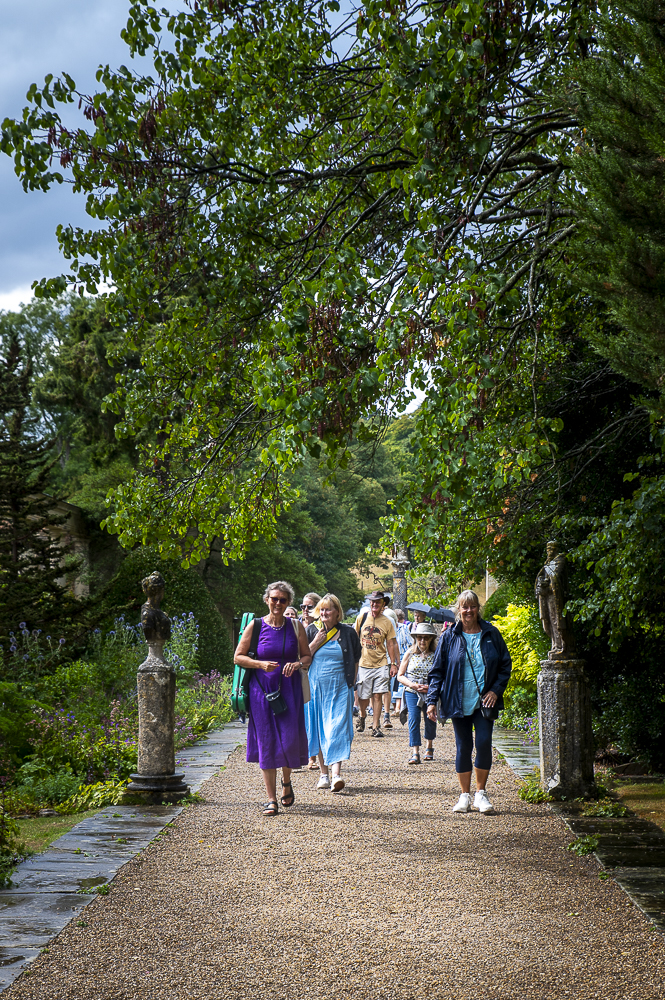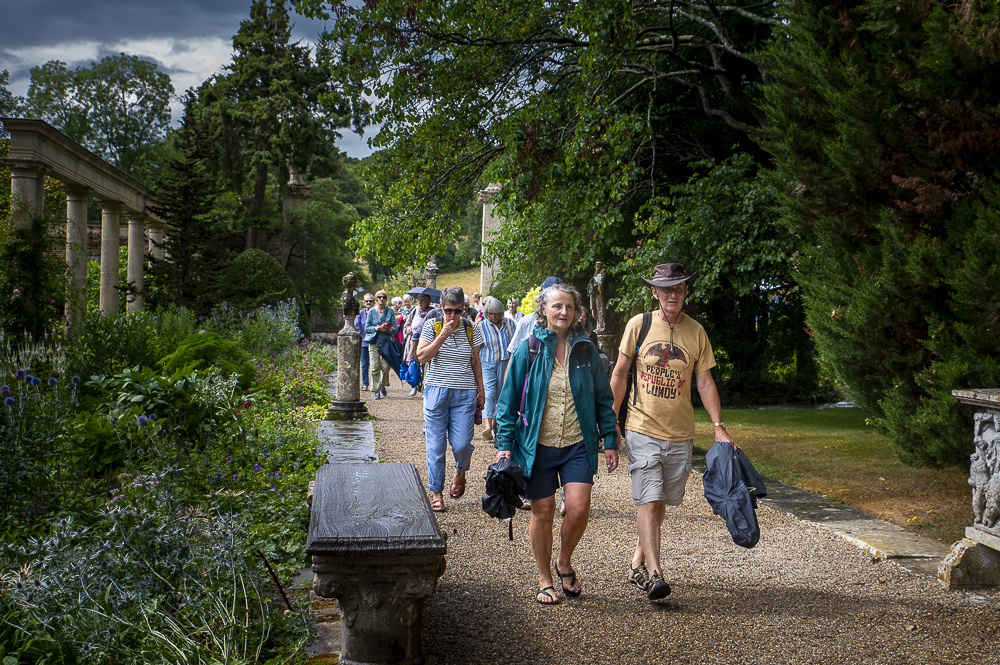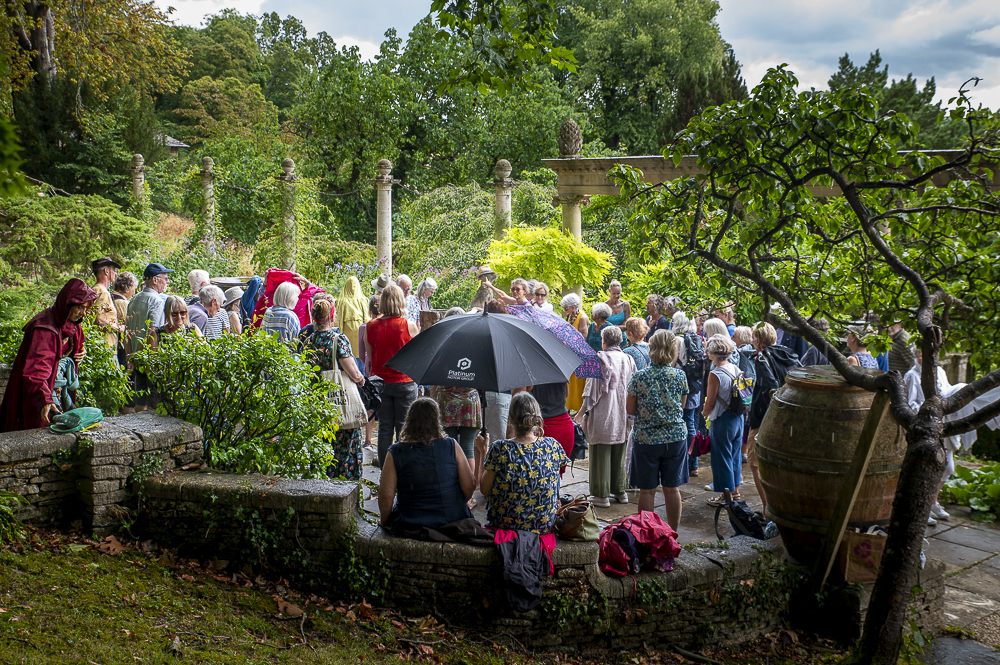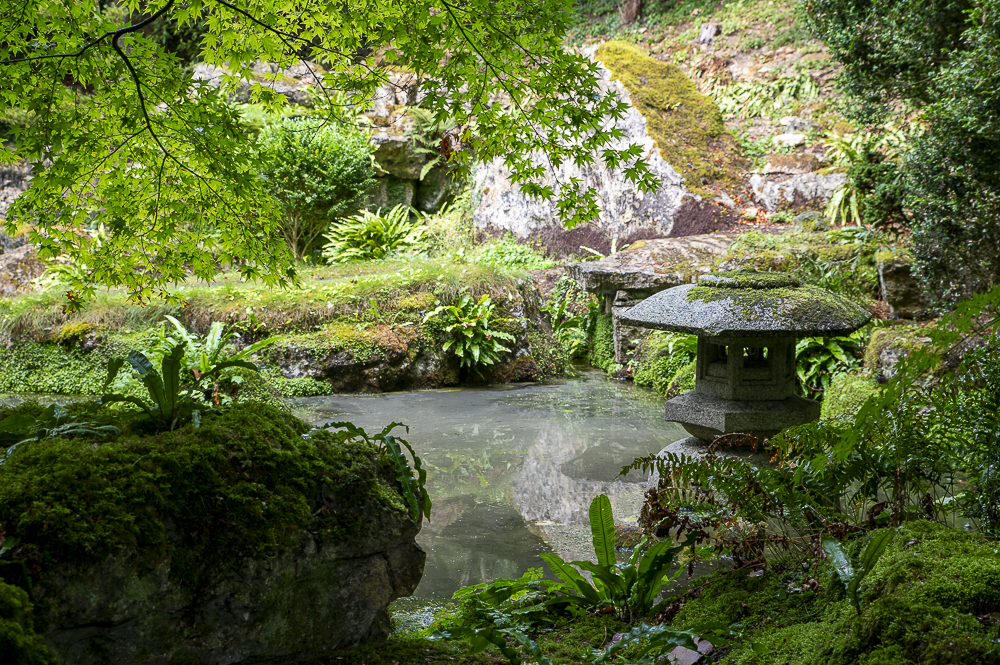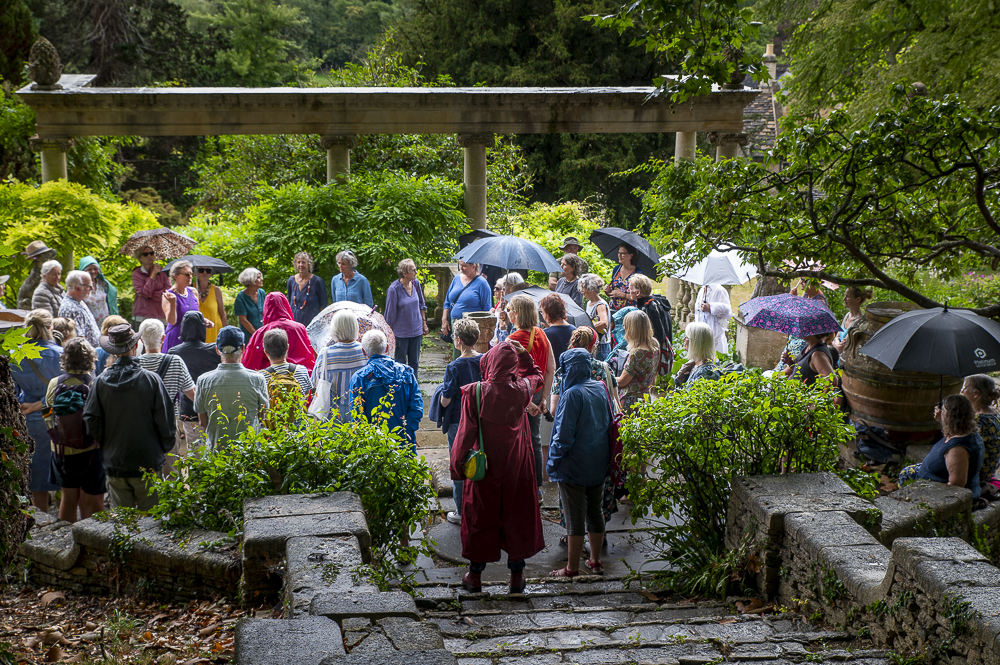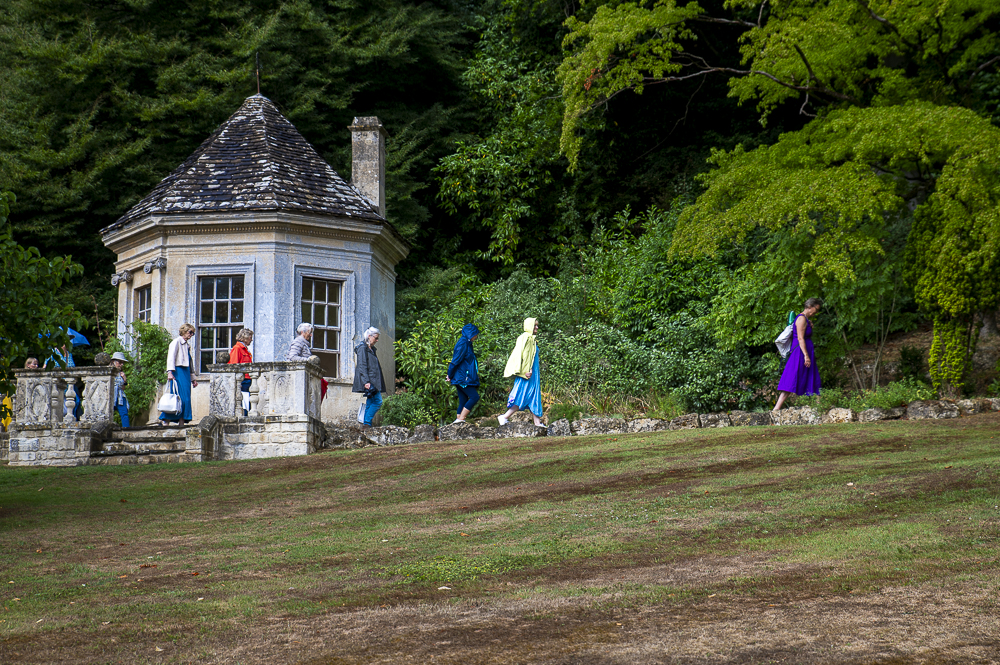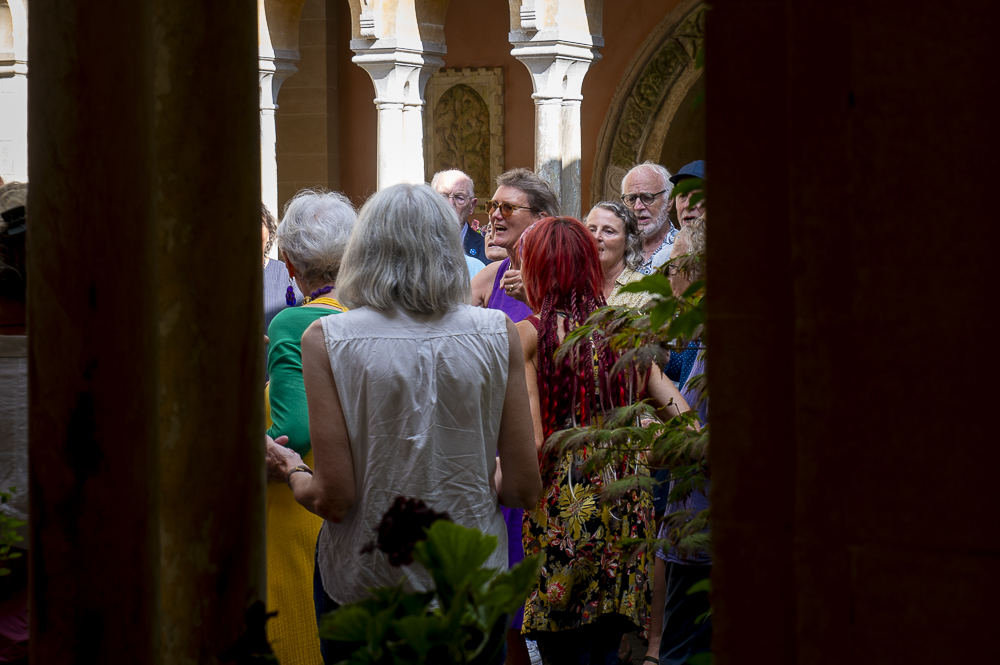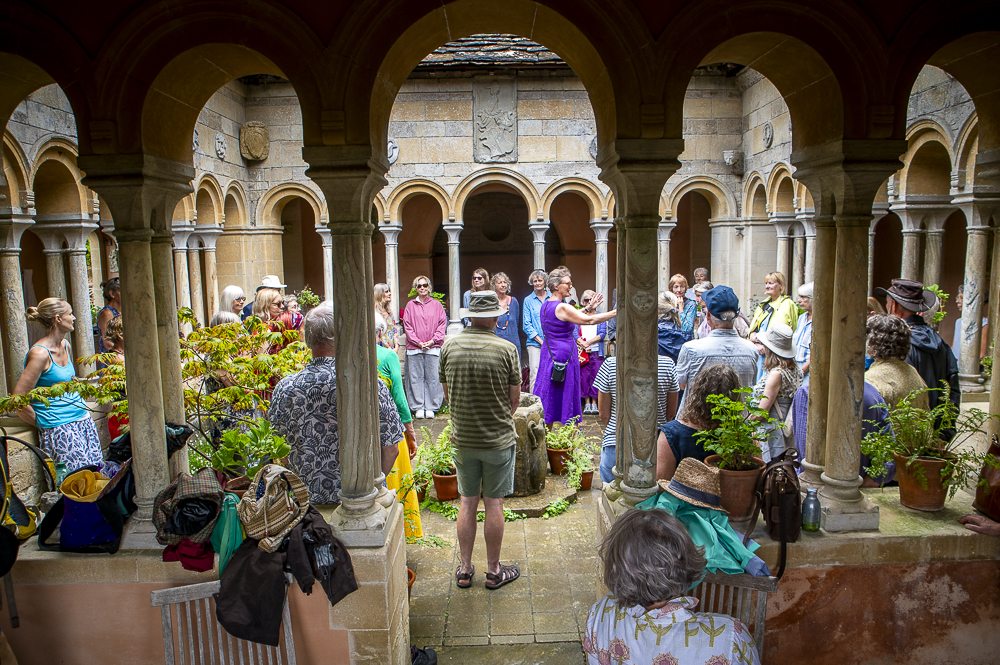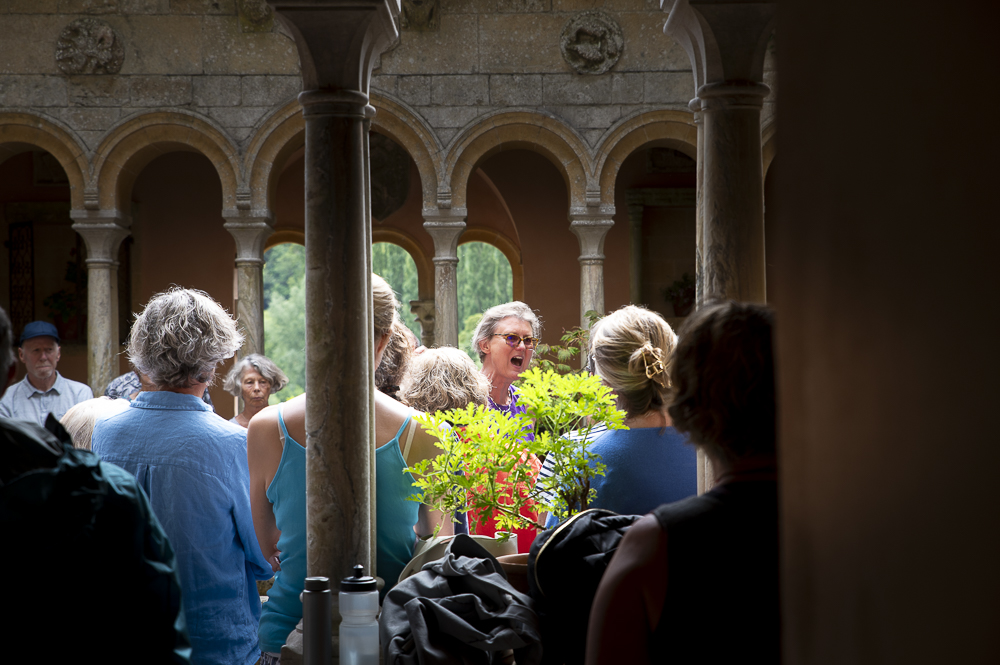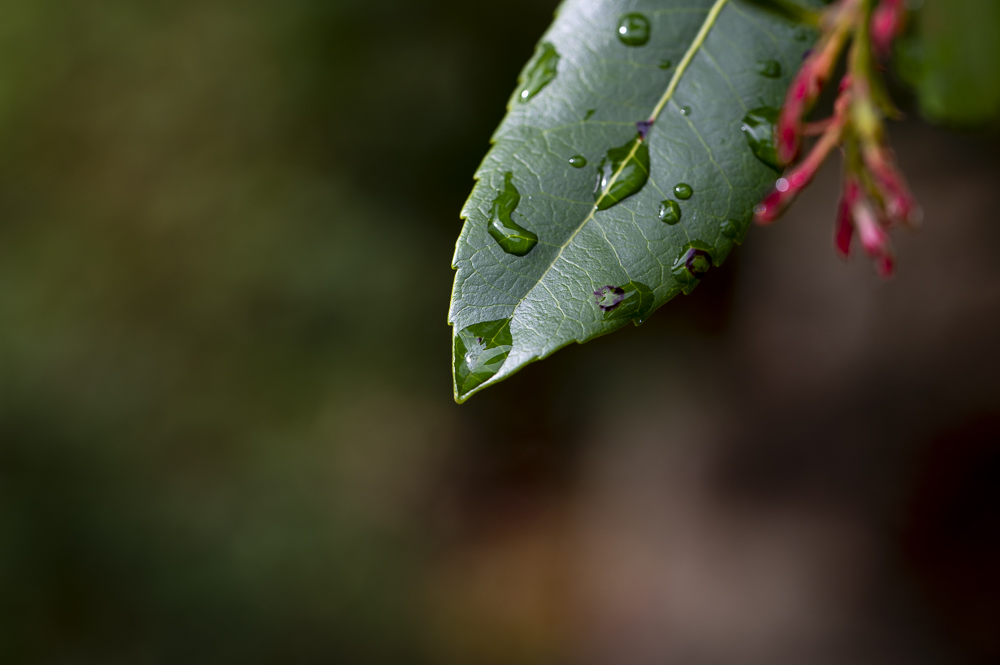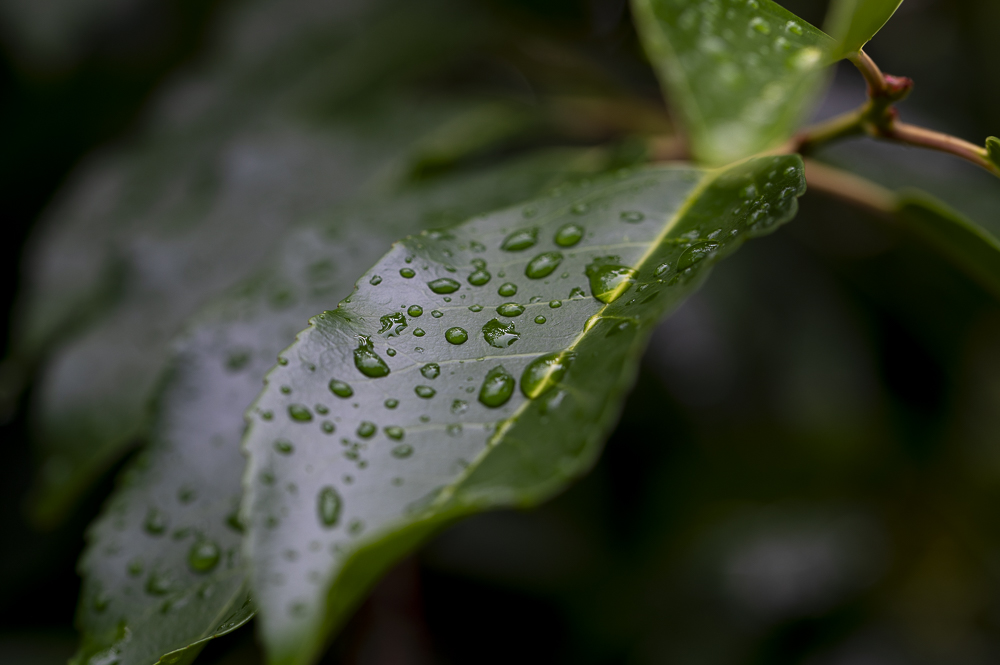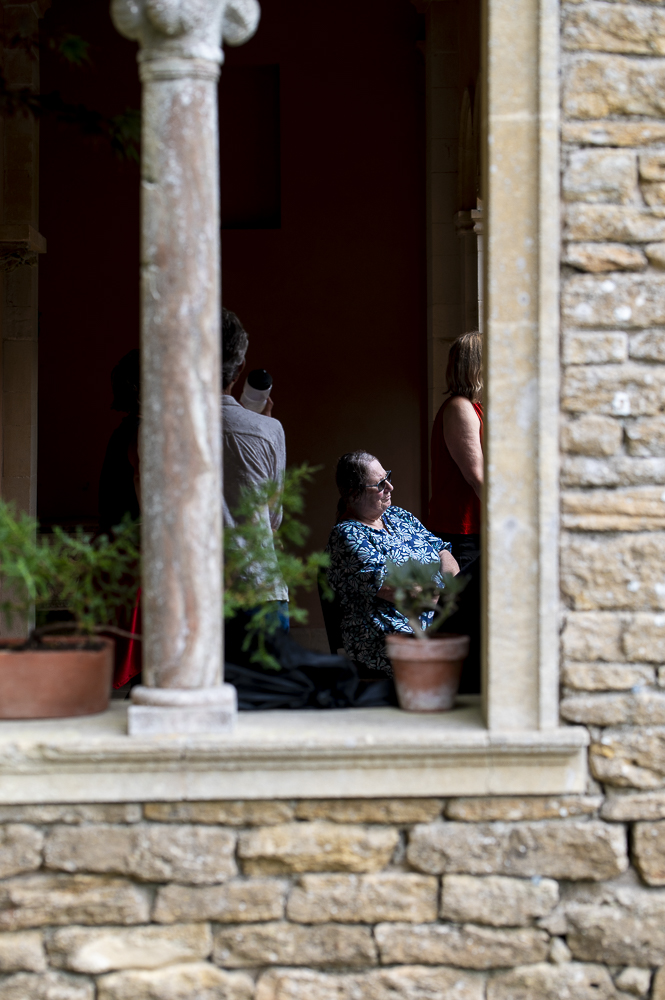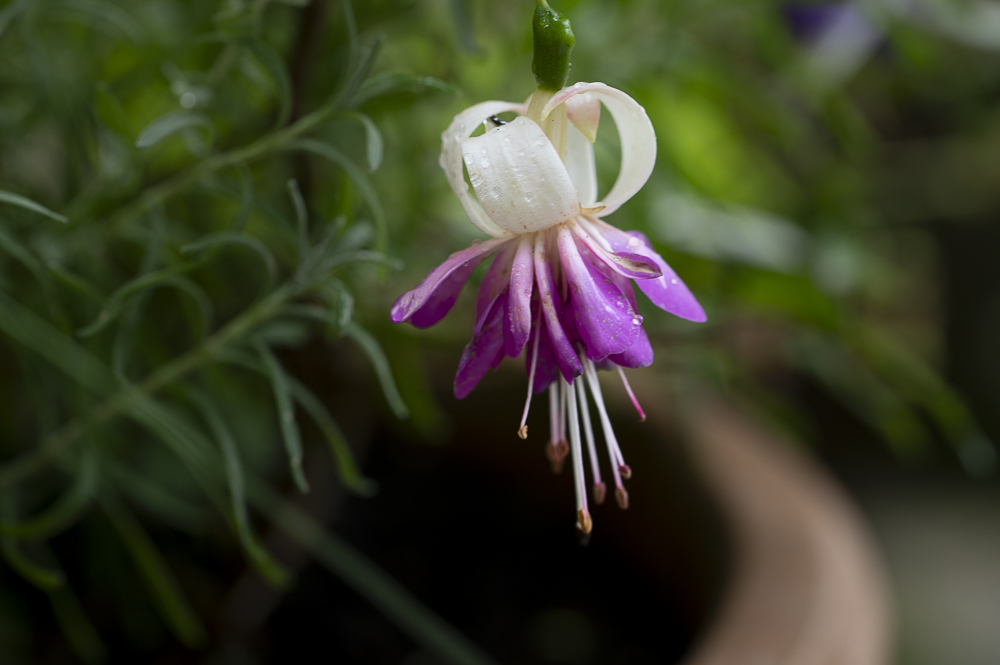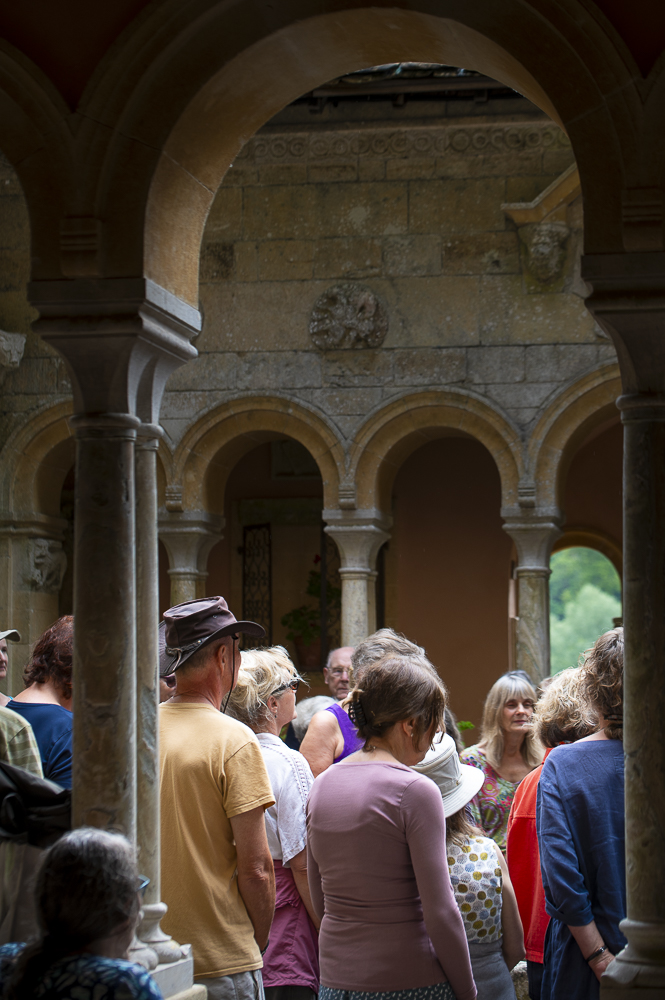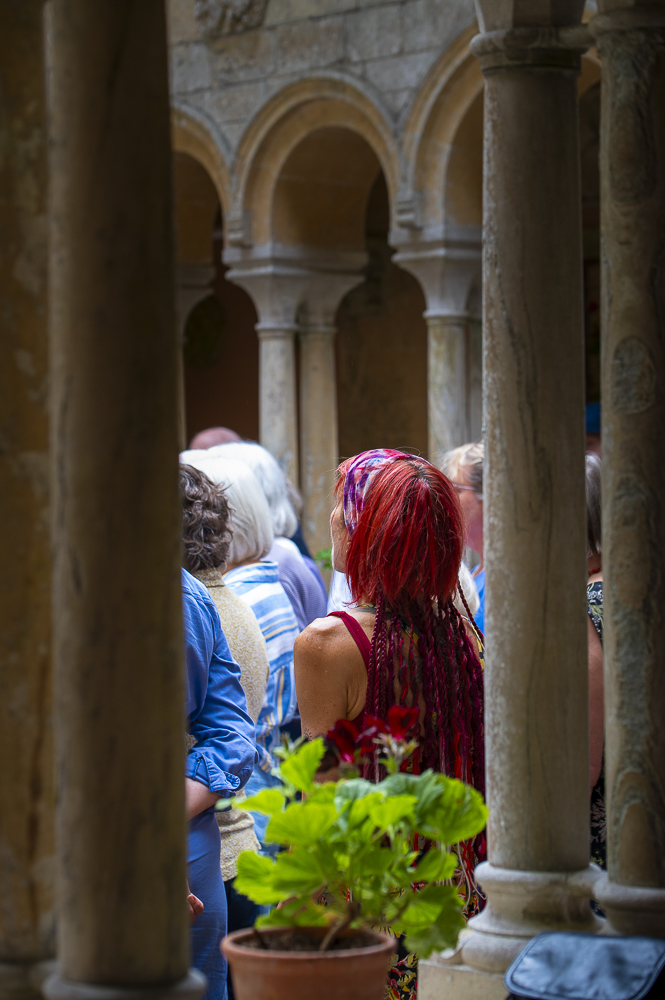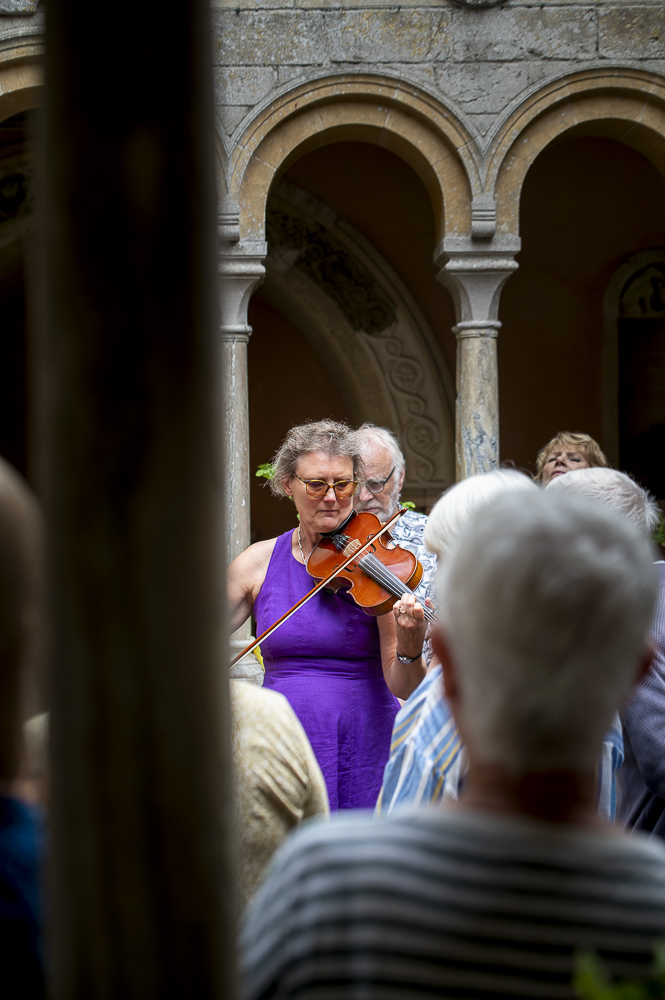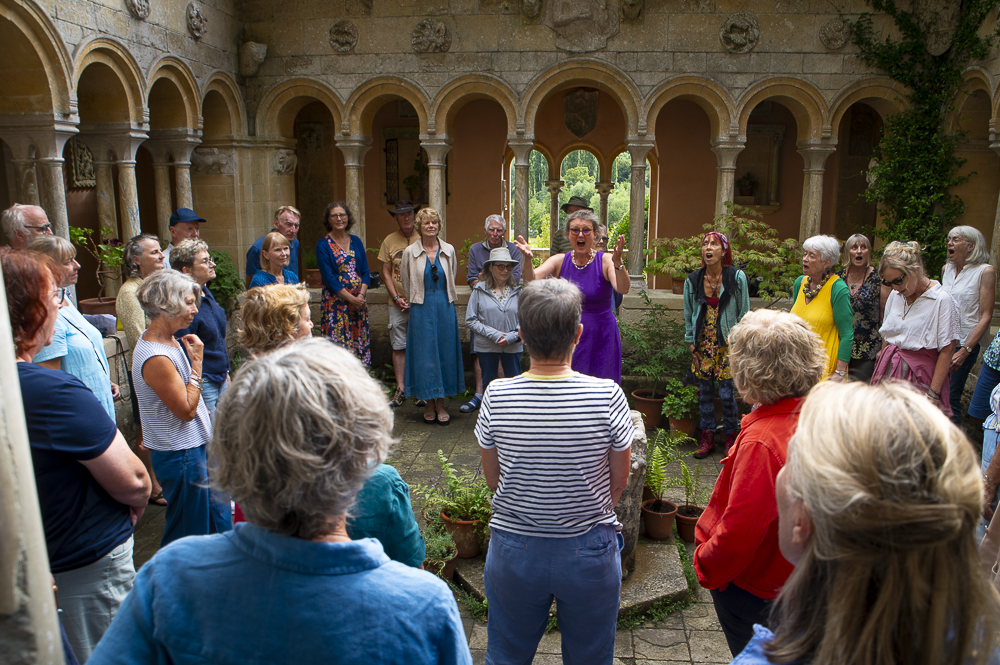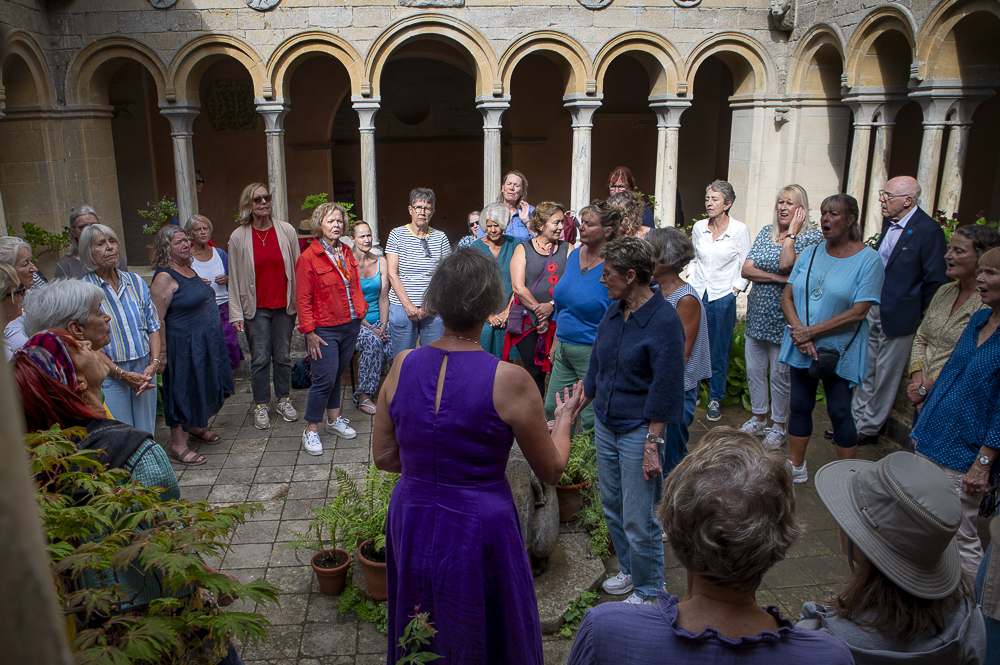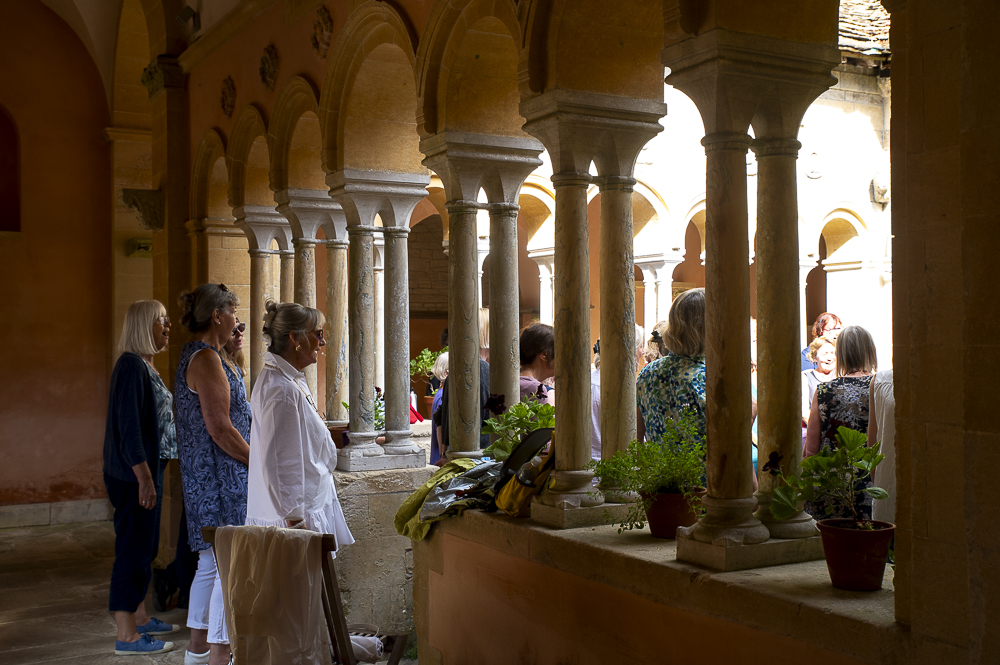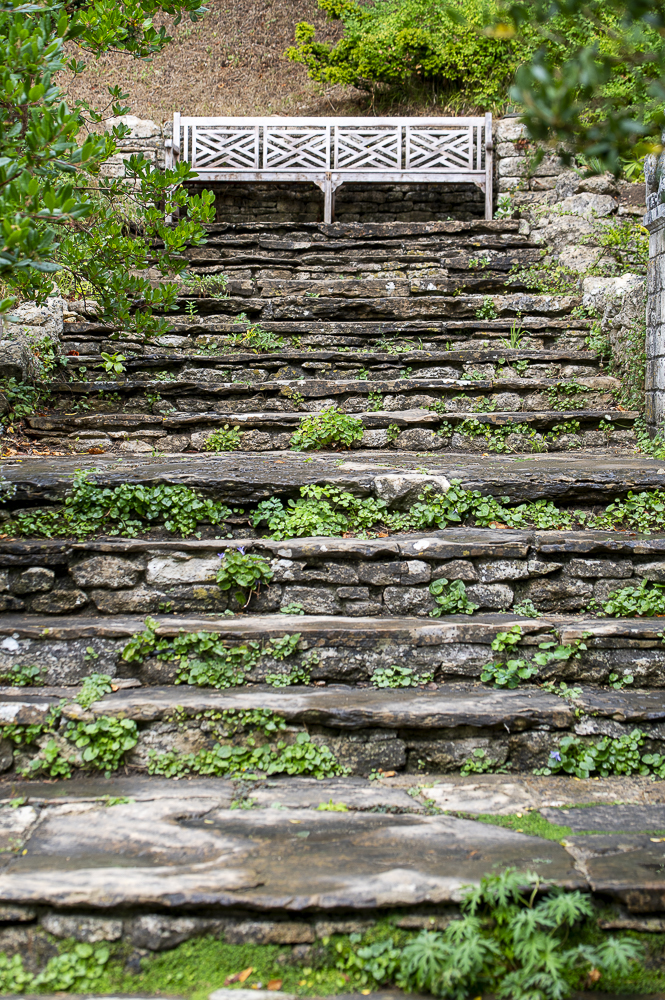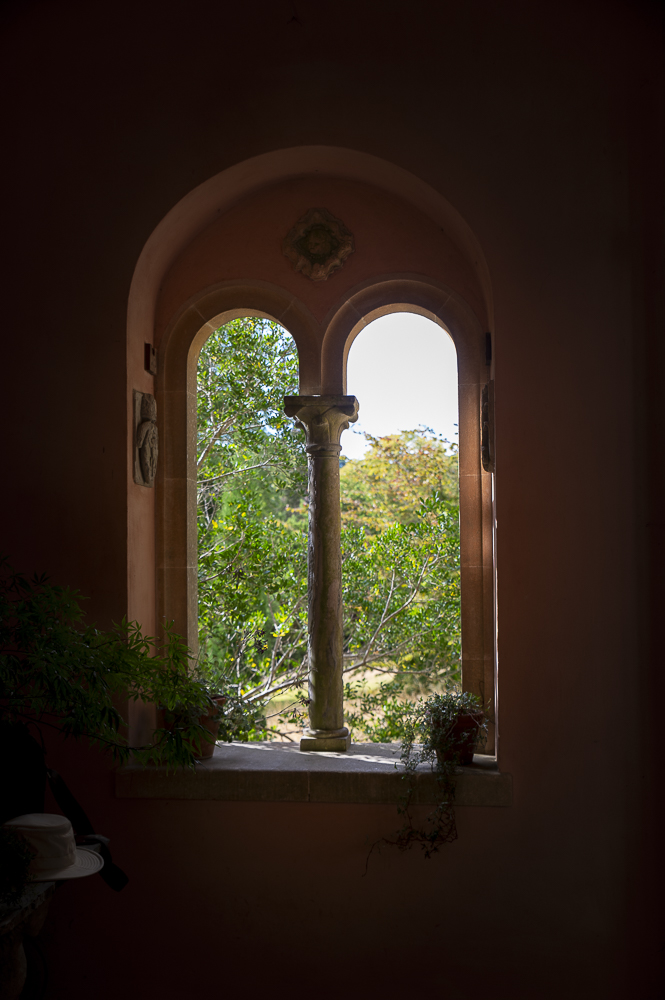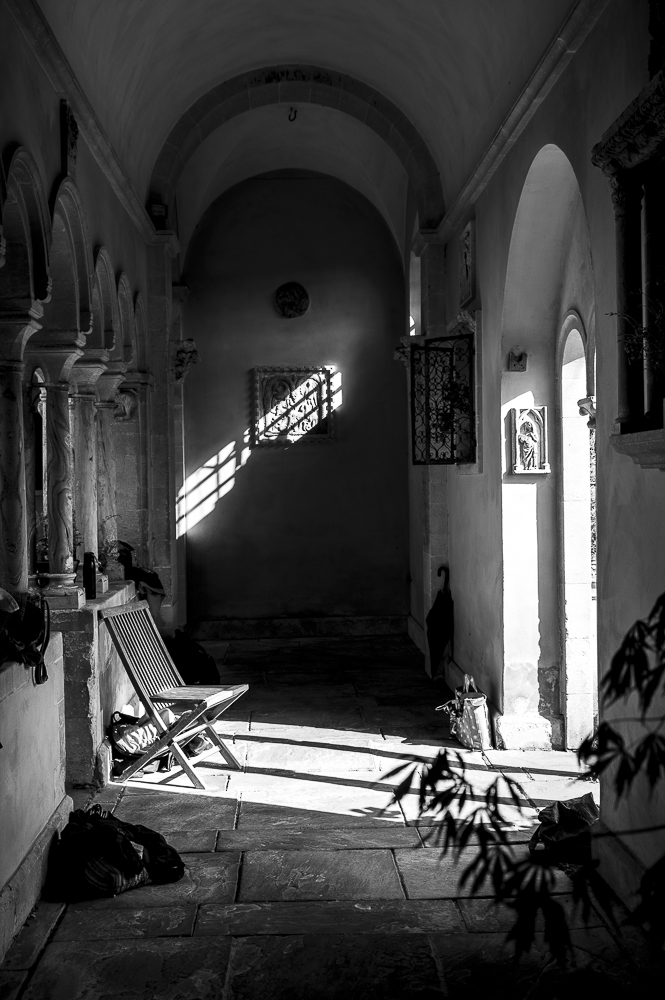Fifty-five singers gathered for Sing at Iford in July 2025 by Jane Harris, Director of Songways, to sing in the exceptional cloisters and hillside garden at Iford Manor. All the songs and harmonies were taught by ear and singers came from Bath, Bradford on Avon, Bristol and Wells, and from further afield too… Devon, Dorset, Buckinghamshire, Kent and Norfolk.
We began singing in the Loggia, sheltering from the rain showers, then moving up to the Casita. It was a magical moment when the sun emerged as Jane played her violin to introduce Spirit of the wind. Jane’s song, In beauty may I stand, was beautiful as we gathered on the Great Terrace. Singing in the Cloisters was wonderful – such a special space and acoustic, with our rounds spiralling upwards, a South African praise song reverberating around and exquisite moments of group vocalisation and stillness.
Comments from singers:
“Beautiful and moving”
“Wonderful choice of songs”
“Amazing experience”
Iford is an “other-worldly” place with an exquisite garden nestled in a sheltered valley near Bath. To sing at Iford is a particularly special way to enjoy all that it has to offer: to savour the sounds we create in different parts of the garden, listen to the bird song, relish the privilege of having the cloisters to ourselves, enjoy learning songs and harmonies together and feast our eyes on the wonderful vistas throughout the garden.
Warmest thanks to everyone who came and to William and Marianne Cartwright-Hignett for the use of the garden.
Photos of Sing at Iford 2025 by Dave Pegg
- Singing in the rain at the Loggia…
- … sun at the Casita
- Along the Great Terrace…
- … to the Cloisters
- Opportunities to listen…
IFORD AND THE PETO GARDEN
In 1899, the architect and garden designer, Harold Ainsworth Peto, discovered Iford. The individuality of the garden owes everything to his inspiration and eye for combining architecture and plants.
The peaceful, Grade 1 registered garden is unlike any other with its romantic design and architecture, combining formality with nature and magnificent rural views across an unspoilt valley, whilst beautifully framed architectural gems and antiquities punctuate your visit throughout.
The house is built into the steep hillside, so terracing forms an important element of the design. Peto was particularly attracted by the charm of old Italian gardens, where flowers occupy a subordinate place amongst the cypresses, broad walks, statues and pools. The current owners have restored the design and planting in accordance with Harold Peto’s vision and over the years, have transformed the area of the Oriental garden.
The garden includes delightful features such as the Loggia, the Great Terrace, the Casita and the largest of Peto’s garden buildings, the Cloisters.

